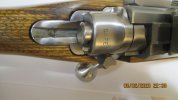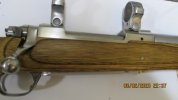Aluminum bedding blocks, properly bedded...those facts make the difference.I agree. I have 4 Tikkas all with multiple barrel changes and every one is still running the original factory style lug. They are in aluminum bedding blocks but still, the lugs are in great condition. Only a small amount of mechanical locking is necessary. Anything more is up selling and fluff.
Last edited:


